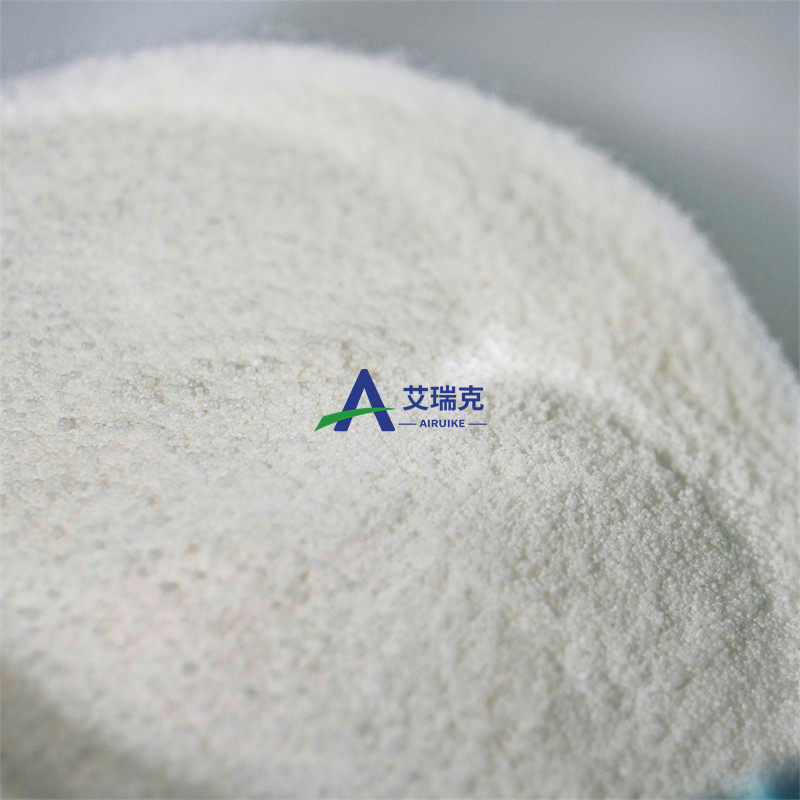The latest development of embryonic stem cells (phase 4)
-
Last Update: 2019-10-28
-
Source: Internet
-
Author: User
Search more information of high quality chemicals, good prices and reliable suppliers, visit
www.echemi.com
October 28, 2019 news / Biovalley BIOON / - -- embryonic stem cell, is a kind of cell with the ability of lasting renewal, it can or develops into almost all kinds of human tissues or organs, so it has a very important research value and application prospect in medicine Human embryonic stem cells (hESCs) are undifferentiated cells in the early stage of human embryonic development, the blastocyst (about 5-7 days after fertilization) The blastocyst contains about 140 cells It is a flat cell on the outside, called trophoblast It can develop into supporting tissue of embryo, such as placenta The central cavity is called the blastocyst cavity, and the cell group on one side of the cavity is called the inner cell group These undifferentiated cells can further divide, differentiate and develop into individuals The inner cell group began to differentiate when the inner, middle and outer germ layers were formed Each embryo layer will be differentiated into various tissues and organs of human body, such as the ectoderm will be differentiated into skin, eyes, nervous system, etc., the mesoderm will form bone, blood, muscle and other tissues, and the endoderm will be differentiated into liver, lung, intestine and so on Because inner cell groups can develop into complete individuals, these cells are considered totipotent When the inner cell group is cultured in a dish, we call it embryonic stem cells Human embryonic stem cells There are four sources: human embryo tissue of selective abortion; human embryo produced by in vitro fertilization which is not needed by infertile couples; human embryo produced by in vitro fertilization by gametes donated by donors specially for research institutes; human embryo or chimeric embryo produced by transferring human nucleus into human or animal follicles by somatic cell nuclear transfer technology This article reviews the latest progress in embryonic stem cell research in recent years for the readers 1 MSB: the time fluctuation of transcription factor concentration may affect the differentiation fate of embryonic stem cells Doi: 10.15252/msb.20199002 how does the time change of protein concentration affect biology? This is a problem that biologists have only recently begun to study and solve, and more and more research results show that the random time change of specific protein quantity plays a direct and important role in the biological process Recently, in a research report published in the international journal molecular systems biology, scientists from the Federal Institute of technology and other institutions in Lausanne, Switzerland, found that the time fluctuation of protein concentration may determine the type of cells transformed by embryonic stem cells Photo source: D Suter, EPFL In this paper, the researchers studied two important transcription factors, Sox2 and Oct4 The level of these two transcription factors will change with time in embryonic stem cells, which is very important for the self-renewal and differentiation of embryonic stem cells into specific cell types In order to monitor the time fluctuation of transcription factors, the researchers carried out a very complex genetic engineering operation, and created five knock-in "reporter" genes on an embryonic stem cell line Genes), these genes are attached to the relevant genes When the target gene is expressed in the cell, it will generate visible signals, such as fluorescence, and then it will "report" when it produces the corresponding protein Using this method, researchers can monitor Sox2 and Oct4 fluctuations over time in living cells, as well as clarify how these fluctuations affect the fate of embryonic stem cells The researchers found that small changes in the level of any of these transcription factors would affect the fate of cells, but only in the G1 phase of cell growth, increasing the level of Sox2 seems to lead to embryonic stem cells To promote the differentiation of neuron cells, and improve the level of Oct4 will strongly turn the cells into neuron cells and non neuron cells The reason is that higher level of Oct4 will increase the accessibility of differentiation factors to cell chromatin 2 Nature: Chinese scientists develop microfluidic embryo models to help uncover the secrets of embryo development doi: 10.1038/s41586-019-1535-2 early human embryo development includes a wide range of genealogical diversity, cell fate differentiation and tissue models Despite the basic and clinical importance of early human embryo development, due to the differences between species and the limited availability of human embryo samples, scientists are still unclear about the reasons for early human embryo development In order to reveal the secrets, Jiang Ping Fu, a Chinese scientist from the University of Michigan, cooperated with researchers from the University of California to report an in vitro microfluidic culture system for human pluripotent stem cells (hpscs) The related research results were published on nature, entitled "controlled modeling of human epiblast and ammonia development using stem cells" In a highly controllable and scalable way, this system simulates the development of the ectoderm and the amniotic ectoderm, including the formation of the endoderm and the resulting anterior amniotic cavity, the formation of the bipolar embryo sac, and the differentiation of the primordial germ cells and the primordial striated cells The researchers further demonstrated that amniotic ectoderm like cells act as a signal center, triggering gastrin like events in human papillary cells Because of the controllability and expansibility of microfluidic devices, it provides a powerful experimental system for the development of human embryology and reproductive science According to the researchers, this model can provide reference for the rational design of hpscs cell differentiation scheme in disease modeling and cell therapy, as well as high-throughput drug and toxicity screening to prevent pregnancy failure and birth defects 3 NAT cell biol: it's a mystery that how BMP4 destroys the symmetry of human embryo doi: 10.1038/s41556-019-0349-7 using the embryoids constructed by human embryonic stem cells In a new study, researchers from Rockefeller University in the United States used human embryonic stem cells (ESC) to build an early human embryo model in the laboratory, and this model is more complex than any previous laboratory built embryo model They also found that the use of BMP4 destroys the symmetry of these embryonic models (called embryoids), or changes from spheroids to structures with front and back ends Surprisingly, this can occur in embryoids that contain BMP4 but do not have maternal factors or extraembryonic tissues The relevant research results were published in the Journal of nature cell biology in July 2019 The title of the paper is "a 3D model of a human epiblast reveals BMP4 driven symmetry breaking" This is from the laboratory of stem cell biology and molecular embryology, Rockefeller University These researchers placed the isolated human embryonic stem cells in Petri dishes containing hydrogel and extracellular matrix scaffolds, and found that they would self assemble into spheres that were equivalent to the 10 day old human embryo (the so-called upper stage) When they added BMP4, the embryoids showed anteroposterior polarity, including signs of primitive striations, which established a midline in the embryo According to current ethical guidelines followed by stem cell researchers, research on actual human embryos can only last 14 days George Daley, President of Harvard Medical School and a stem cell scientist (who was not involved in the new study), said the study "would certainly suggest that science is challenging this rule," adding that based on these findings, stem cell scientists would have to rewrite their guidelines 4 NAT Biotechnology: human embryonic stem cell derived epicardial cells enhance cardiac regeneration driven by cardiomyocytes doi: 10.1038/s41587-019-0197-9 epicardium and its derivatives provide nutrition and structural support for the development and adult heart To this end, Charles E Murry from Washington University and Sanjay Sinha from Cambridge University jointly tested the ability of epicardium derived from human embryonic stem cells (hESC) to enhance the structure and function of engineered heart tissue in vitro, and to improve the efficacy of hESC cardiomyocyte transplantation in the heart of rats with myocardial infarction The relevant research results were published in Nature Biotechnology, entitled "epic cells derived from human embryonic stem cells authority cardiomyosyte driven heart regeneration" Compared with mesenchymal cells, epicardial cells significantly enhanced the contractility, myofibrillar structure and calcium handling capacity of human engineered heart tissue, and reduced passive stiffness The transplanted epicardial cells form a permanent fibroblast graft in the infarcted heart The combined transplantation of epicardial cells and cardiomyocytes derived from hESC in vivo doubled the proliferation rate of cardiac grafts, increased the size of cardiac grafts by 2.6 times, and enhanced the vascularization of grafts and hosts It is worth noting that the combined transplantation improves the systolic function of the heart compared with the heart receiving cardiomyocytes, epicardial cells or carriers alone 5 NAT biotechnol: new research helps drug development of Huntington's chorea doi: 10.1038/s41587-019-0237-5 Huntington's disease is a genetic disease with slow onset, which often occurs after middle age But new research suggests that for people with Huntington's, some changes in the brain may occur long before symptoms appear Image source: Professor Ali brivanlou's laboratory has developed a brain organ model composed of tiny glial three-dimensional tissue cultures The researchers used human embryonic stem cells to make these models, and operated them in a laboratory environment to study the pathogenesis of developmental diseases Previous studies have shown that Huntington's disease is accompanied by pathological changes in young neurons, and in this latest study, the authors further traced the development time to the stage of brain development When researchers introduced mutations known to cause Huntington's disease into the glia, the structure of the entire brain model changed significantly Further, researchers used the first mock exam to screen for the drugs that prevent these abnormalities They hope this method can find strong alternative therapies 6 Cell Rep: to reveal the new function of proteins that play a key role in tumors and rare diseases This may help to understand and solve the causes of these diseases By studying mouse embryonic stem cells - similar to human embryonic stem cells - losada and her team at CNIO published their findings in cell reports, showing that annexin-sa1 helps to distinguish different regions (TADS) of genomic tissue Annexin-sa2 helps regulate the expression of genes that play a role in maintaining stem cell pluripotency - the ability of stem cells to produce the properties of all cell types that make up an adult organism "It's very important for us to confirm that what we observe in human cells also occurs in different types of cells, such as mouse embryonic stem cells," said losada, the study's co-author "In addition, this study provides evidence for the new role of adhesins in the structure of embryonic stem cells "For the first time, we have shown the contribution of adhesins to the three-dimensional tissue of Polycomb domains," she added "7 NAT commun: researchers found
This article is an English version of an article which is originally in the Chinese language on echemi.com and is provided for information purposes only.
This website makes no representation or warranty of any kind, either expressed or implied, as to the accuracy, completeness ownership or reliability of
the article or any translations thereof. If you have any concerns or complaints relating to the article, please send an email, providing a detailed
description of the concern or complaint, to
service@echemi.com. A staff member will contact you within 5 working days. Once verified, infringing content
will be removed immediately.







